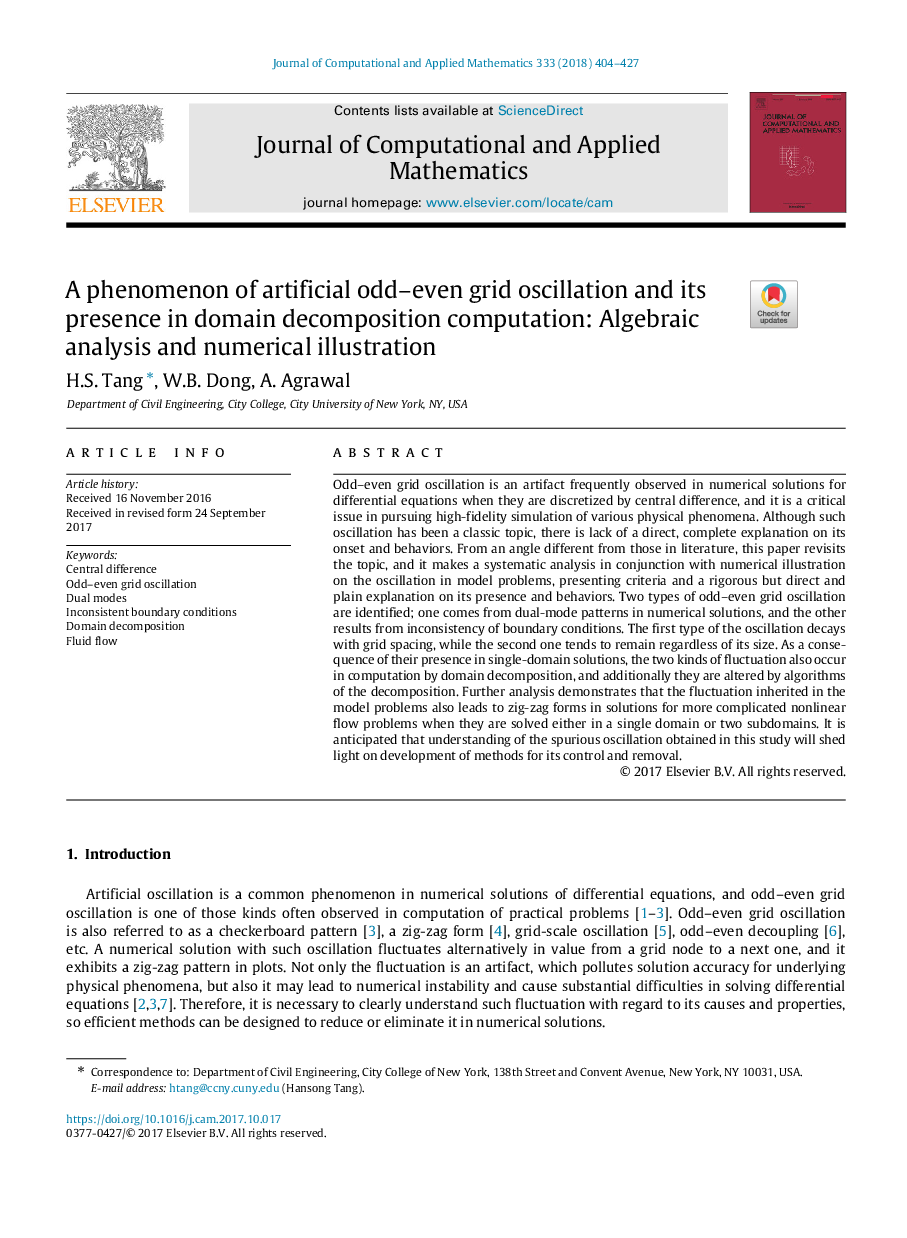| Article ID | Journal | Published Year | Pages | File Type |
|---|---|---|---|---|
| 8902177 | Journal of Computational and Applied Mathematics | 2018 | 24 Pages |
Abstract
Odd-even grid oscillation is an artifact frequently observed in numerical solutions for differential equations when they are discretized by central difference, and it is a critical issue in pursuing high-fidelity simulation of various physical phenomena. Although such oscillation has been a classic topic, there is lack of a direct, complete explanation on its onset and behaviors. From an angle different from those in literature, this paper revisits the topic, and it makes a systematic analysis in conjunction with numerical illustration on the oscillation in model problems, presenting criteria and a rigorous but direct and plain explanation on its presence and behaviors. Two types of odd-even grid oscillation are identified; one comes from dual-mode patterns in numerical solutions, and the other results from inconsistency of boundary conditions. The first type of the oscillation decays with grid spacing, while the second one tends to remain regardless of its size. As a consequence of their presence in single-domain solutions, the two kinds of fluctuation also occur in computation by domain decomposition, and additionally they are altered by algorithms of the decomposition. Further analysis demonstrates that the fluctuation inherited in the model problems also leads to zig-zag forms in solutions for more complicated nonlinear flow problems when they are solved either in a single domain or two subdomains. It is anticipated that understanding of the spurious oscillation obtained in this study will shed light on development of methods for its control and removal.
Keywords
Related Topics
Physical Sciences and Engineering
Mathematics
Applied Mathematics
Authors
H.S. Tang, W.B. Dong, A. Agrawal,
